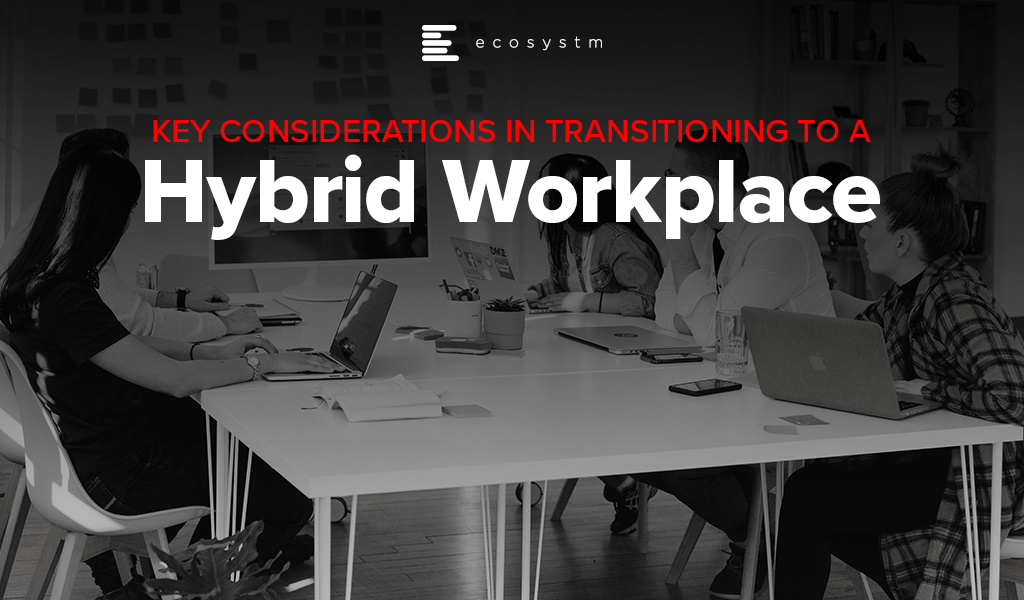
The adoption of new digital and data-centric technologies is transforming the workplace and making it more productive. The concept of the workplace has evolved over time, and it is no longer tied to the tradition of working from a fixed physical location. Rather, the workplace has expanded its horizon and has evolved into a wider virtual environment empowered by technologies such as smartphones, wireless connectivity, virtual and augmented reality, collaboration tools and a range of productivity technologies.
Innovation has continued to revolutionise the workplace. It has been 40 years since digital technology transformed the back offices of large organisations; 30 years since the PC revolution revolutionised the front office with productivity tools such as word processors and spreadsheets for all information workers; just 20 years since the Internet became a common business tool and; the smartphone, particularly the iPhone made its way into the workplace.
Each of these waves of technology contributed towards workplace transformation and has made way for the new wave of transformation – through emerging technologies such as Artificial Intelligence (AI) and newer business models (as-a-service and cloud-based delivery of personal productivity tools).
Organisations are being driven towards a “Mobile First” strategy to empower their “Smart employees” – no longer thinking of migrating their web apps to mobile apps, as and when required. They are looking to implement and develop mobile apps first. In the global Ecosystm Mobility study, only about 2% of organisations indicate the absence of a Mobile-First strategy and this is a good indication of the transformation that lies ahead.

To be able to implement a Mobile-First vision, become a Smart Workplace and for a seamlessly integrated environment, organisations will need to invest in multiple technologies simultaneously. These include:
- Collaboration tools: Software and tools that help individuals in the workplace to collaborate and work together on a project in a smart and efficient way with shared data and resources – irrespective of their locations. Although the concept of collaboration is not new, technologies such as AI and Cloud allow for greater collaboration. This has driven leading players in the market to also offer Cloud solutions. Microsoft is a good example, where Cloud brought added features and services to their MS Office suite to match the requirements of an evolving workplace.
- Social media: A technology that was popularized in the consumer space evolved into a major collaboration and productivity technology for enterprises. This opens up the possibility of incorporating sophisticated analysis tools, many of them driven by AI technology, leveraging social networks. Using social media in the workplace has also improved employee experience, as it enables the employees to interact in similarly efficient ways in the workplace, as they do in their personal lives.
- Workflow and content management: Digitalisation is opening newer avenues, simplifying the way work gets done and exploring ways to improve existing processes and workflows. Workflow and content management systems have improved the way employees produce and manage business information thus making processes more efficient, cost-effective, and secure.
- Mobility: The advent of smartphones, wireless networking, and mobile applications have enabled employees to work from any place and any time. This has expanded the workplace boundaries and employees can stay connected with the work while on the move.
- Unified Communications: There are multiple channels of communication – voice, data, image, video – open to employees today, depending on the level of communication required to perform their jobs. Organisations are increasingly implementing one integrated corporate communication system.
Workplace innovation is already pervasive in customer focussed industries. However, workplace innovation is also combining with other emerging technologies such as AI and IoT to transform workplaces in supply-chain intensive industries as diverse as Manufacturing, Transport & Logistics, Energy & Utilities, and Mining & Resources. As this trend continues, we will start to see even more innovations to our places of work.






